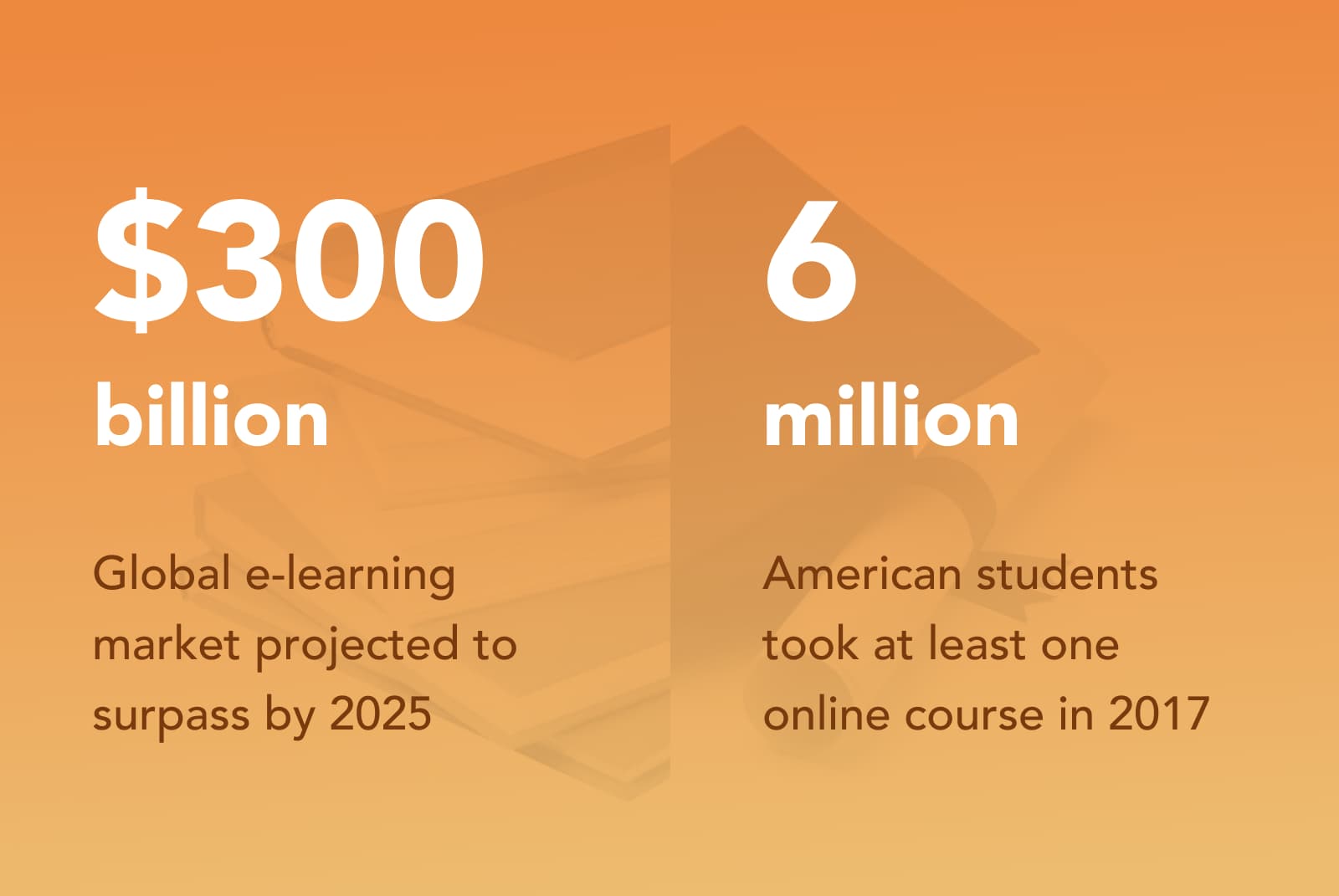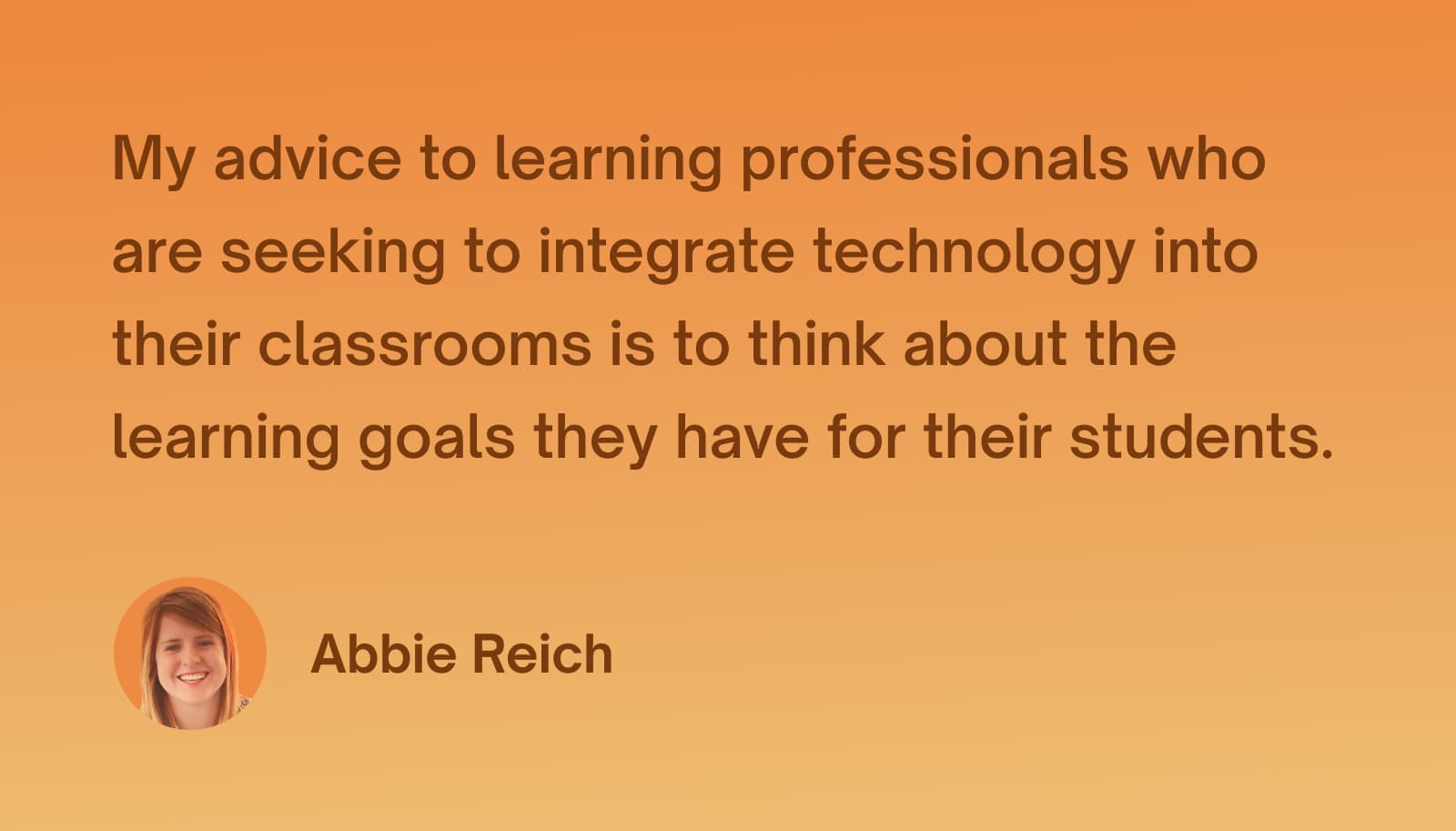The power of e-learning: Revolutionizing education through online platforms and technology

E-learning has taken the world by storm, with the global e-learning market projected to surpass $300 billion by 2025. As educational institutions and students alike embrace online platforms and technology, the traditional classroom experience is transforming right before our eyes.
According to a study by the Babson Survey Research Group, over 6 million American students took at least one online course in 2017, a number that has only continued to rise.

As we navigate the digital age, the traditional classroom is evolving into a virtual learning space, opening doors to new possibilities and opportunities.
Abigail Reich, an educator and expert in learning and development, sheds light on how online platforms and technology positively transform the education system in this expert interview.
A little more about our expert – Abigail is an experienced learning professional with over 6 years of expertise in learning strategies, technology integration, and curriculum development.
Keep reading to discover the transformative impact of e-learning on students and teachers.
Breaking down barriers and creating a world of opportunity

E-learning has opened up a world of opportunity, breaking down geographical barriers and democratizing access to education. These days, we are no longer restricted by the confines of a physical classroom. Now, learners have the opportunity to tap into resources and opportunities previously out of reach. Students can now explore courses, degrees, and certifications from institutions across the globe. The sky's the limit when it comes to pursuing knowledge and expanding one's horizons in the digital age.
Imagine a student in a remote town in Argentina with a keen interest in astrophysics, but their local resources are limited. On the other side of the globe is a renowned astrophysics professor in the U.S. who can only reach a limited number of local university students.
E-learning bridges this gap. The student can enroll in the professor's online astrophysics course, accessing materials, lectures, and discussions without leaving home.
Concurrently, the professor can inspire and educate students globally, extending their reach far beyond the local university.
Personalized learning experiences that encourage flexibility
Gone are the days of cookie-cutter education. One size doesn't fit all when it comes to education. E-learning allows a more tailored approach, catering to individual learning styles and needs.
Students can learn at their own pace, hit the pause button when needed, and even rewind to ensure they've grasped the material. This flexibility empowers learners to take charge of their education and fosters a sense of ownership.
Let’s consider a scenario of a student with time constraints and a varying pace of learning and a teacher seeking to provide personalized instruction.
E-learning platforms allow students to access course materials conveniently and customize their learning pace accordingly.
Together, the teacher can use digital tools to monitor progress and adapt their teaching to each student's needs. E-learning personalizes this learning experience and provides flexibility, and promotes academic advancement.
Cost-effective solutions are now available and accessible
E-learning has revolutionized learning by providing an affordable and convenient alternative to traditional education. Previously, students faced the inconvenience of travel or relocation to study a particular subject.
However, now students can easily enroll in online courses and learn from anywhere worldwide. The benefits of e-learning extend to teachers as well. Educators can share their knowledge with a global audience without moving, which is both efficient and cost-effective physically.
Educational institutions also benefit from e-learning as they don't have to pay for facilities, utilities, and transportation. This allows them to allocate resources to improve the educational experience. E-learning has reduced the cost of education by lowering tuition fees and reducing expenses such as commuting, housing, and textbooks.
This has made education more accessible to a wider audience than ever before. With all educational resources available digitally, e-learning is a convenient alternative and a cost-effective solution for institutions and students.
Collaboration and networking across borders

The world is becoming a global village, and e-learning has opened the doors for connecting with peers and educators from around the globe.
Let's imagine a group of students enrolled in an online course on global environmental issues. Students in the class come from all over the world, including North America, Europe, Asia, Africa, and South America. Each student brings a unique perspective on environmental issues based on their respective geographical and cultural contexts.
Online learning platforms encourage interaction and collaboration among students. They share ideas and discuss ways to solve global environmental problems in discussion forums and group projects.
A student from Africa shares first-hand experiences of desertification and deforestation, while a student from Asia contributes insights on urban air pollution. A student from Europe talks about successful renewable energy initiatives, and a student from North America discusses policies on waste management.
Through these exchanges, not only do they gain a comprehensive understanding of global environmental issues, but they also learn to appreciate diverse perspectives. They collaborate on a group project, combining their unique insights to propose sustainable solutions to these environmental challenges.
This collective problem-solving approach cultivates essential skills like teamwork, critical thinking, and intercultural communication that are crucial in today's interconnected society.
Also, they build a network of peers and teachers worldwide, which is a valuable asset that can lead to more opportunities in the future.
These connections foster collaboration, creative problem-solving, and the exchange of ideas, equipping students with the skills they'll need to excel in today's interconnected society.
Environmentally friendly learning
E-learning isn't just changing how we learn—it's also kinder to our planet. By reducing the need for paper and transportation, e-learning significantly decreases the environmental footprint of educational institutions. It's a win-win situation for both students and Mother Earth.
Let's imagine a large university that offers multiple courses to thousands of students. Traditionally, each course would require textbooks, handouts, exam papers, and other physical resources. This amounts to an effective use of paper, contributing to deforestation and the associated environmental impact.
But suppose this university introduces e-learning technology that allows students to digitally access all their course materials, like readings, assignments, and exams. What would happen?
The answer is simple: there would be an instant reduction in paper usage, leading to positive impacts on deforestation rates by decreasing the demand for paper production.
In addition to that benefit, there is another advantage: daily commuting reduces significantly because students can participate in classes from anywhere without physically traveling each day back and forth, thus reducing carbon footprints caused by transportation overall.
Lastly, there are also benefits regarding energy use since fewer people regularly attending classes on campus means less need for physical infrastructure, resulting in lower energy consumption needed throughout dormitories or buildings required during typical college semesters around the globe.
What advice would you give to learning professionals looking to integrate technology into their classrooms?
My advice to learning professionals seeking to integrate technology into their classrooms is to think about their learning goals for their students. Do you want to extend their learning? Scaffold their learning? Differentiate? Knowing these answers will help you decide how and when to integrate technology into your classroom.

Technology can be used to expand on core instruction by providing a differentiated small group activity, additional practice, or even formative and summative assessments. Look for technology platforms that provide detailed feedback to the teacher, like a weekly summary or usage report, so you can track your student’s academic accomplishments and adjust accordingly.
There are lots of free options for educators if their school isn’t able to provide paid subscriptions. Some free platforms I use are Quizziz and Nearpod. I use Quizziz as a formative or summative assessment tool. Quizziz times how long students spend on each question and gives you feedback on what all students missed questions or only a few. This is great feedback to use while planning future instruction. Nearpod makes delivering engaging lesson content easy. Students can follow along on slides you create or from the Nearpod library. There are writing tasks, sharing tasks, and options to add a game to the content.
You can start small if adding technology to your teaching routine feels overwhelming. Google Drive has options like Jamboard, which helps you build lessons on their virtual whiteboard. You can include up to 20 slides per jam board, and students can collaborate to complete tasks or demonstrate learning. Save yourself some grading time and have students complete quizzes or exit tickets on Google Forms.
Thank you, Abigail, for sharing your inspiring success story and supporting Workee!
You can connect with Abigail on LinkedIn and Facebook to learn more about her work.


